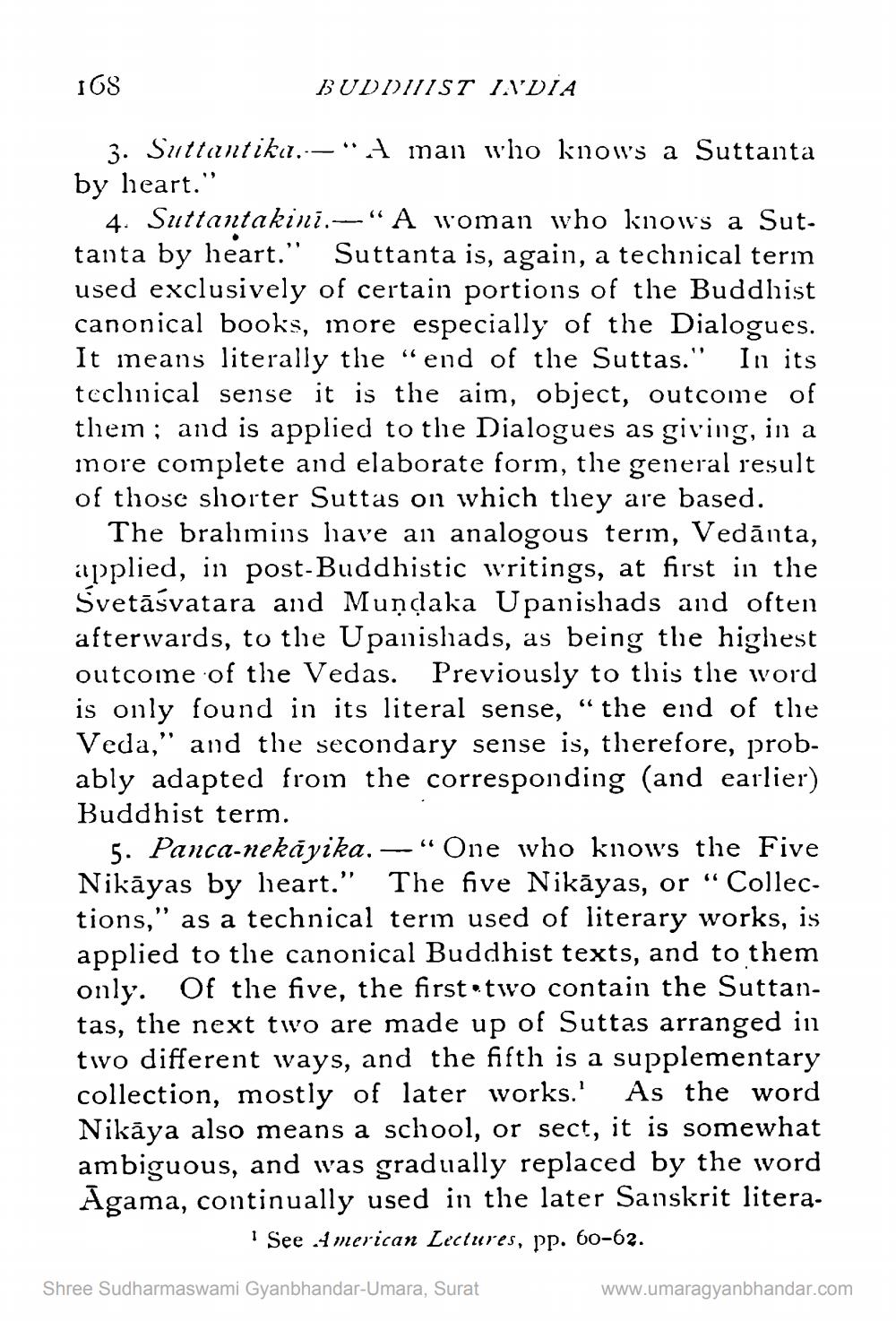________________
168
3. Suttantika.-"A man who knows a Suttanta by heart."
4. Suttantakini. -"A woman who knows a Suttanta by heart." Suttanta is, again, a technical term used exclusively of certain portions of the Buddhist canonical books, more especially of the Dialogues. It means literally the "end of the Suttas." In its technical sense it is the aim, object, outcome of them; and is applied to the Dialogues as giving, in a more complete and elaborate form, the general result of those shorter Suttas on which they are based.
The brahmins have an analogous term, Vedānta, applied, in post-Buddhistic writings, at first in the Svetasvatara and Mundaka Upanishads and often afterwards, to the Upanishads, as being the highest outcome of the Vedas. Previously to this the word is only found in its literal sense, "the end of the Veda," and the secondary sense is, therefore, probably adapted from the corresponding (and earlier) Buddhist term.
BUDDHIST INDIA
66
5. Panca-nekayika. One who knows the Five Nikayas by heart." The five Nikayas, or Collections," as a technical term used of literary works, is applied to the canonical Buddhist texts, and to them only. Of the five, the first two contain the Suttantas, the next two are made up of Suttas arranged in two different ways, and the fifth is a supplementary collection, mostly of later works.' As the word Nikaya also means a school, or sect, it is somewhat ambiguous, and was gradually replaced by the word Agama, continually used in the later Sanskrit litera
See American Lectures, pp. 60-62.
-
Co
Shree Sudharmaswami Gyanbhandar-Umara, Surat
www.umaragyanbhandar.com




